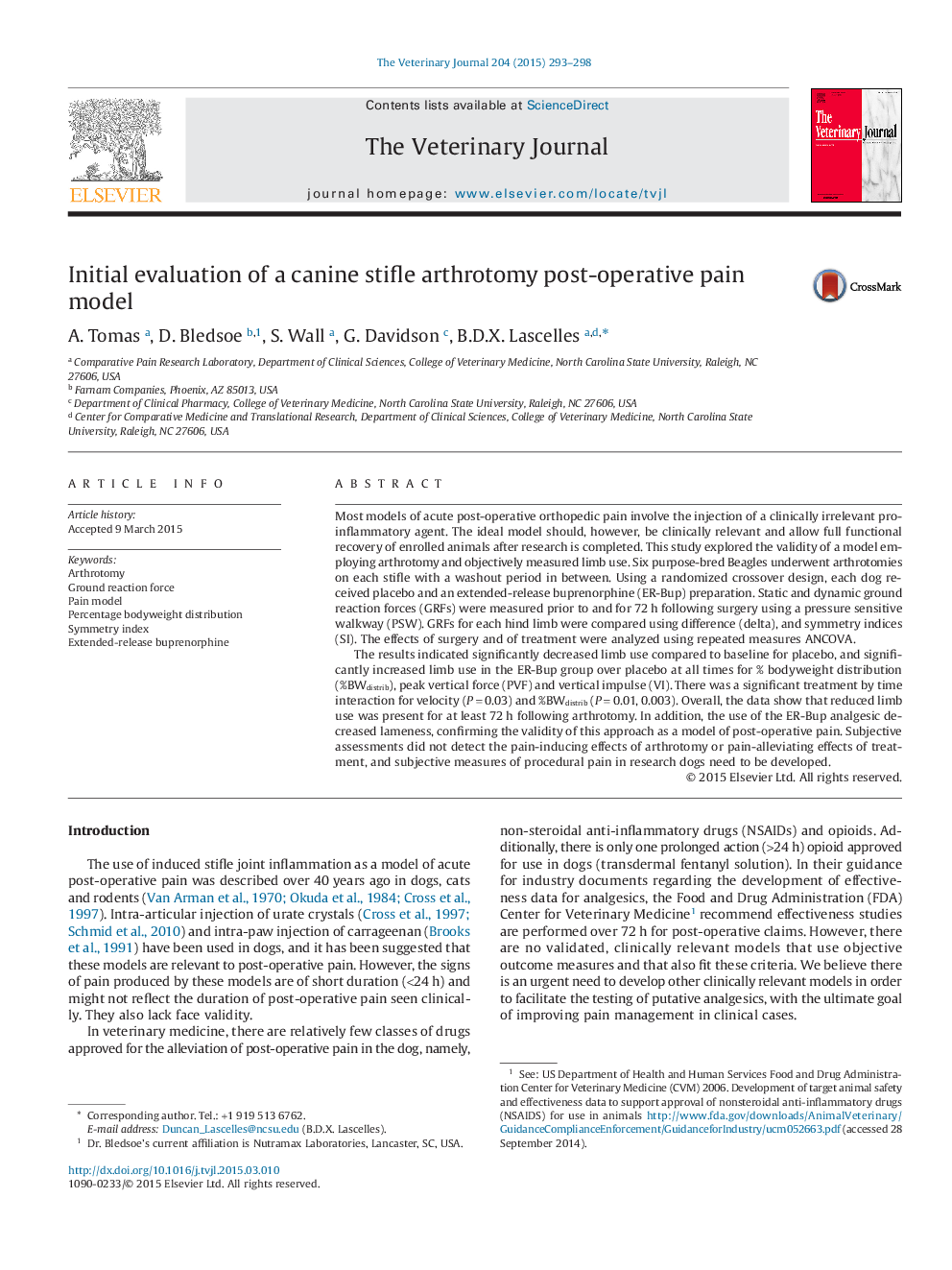| Article ID | Journal | Published Year | Pages | File Type |
|---|---|---|---|---|
| 2463851 | The Veterinary Journal | 2015 | 6 Pages |
•Arthrotomy results in at least 72 h of post-operative pain.•Pain can be sensitively measured using bodyweight distribution to the operated limb.•Validated subjective assessment tools do not appear to detect pain in research dogs.
Most models of acute post-operative orthopedic pain involve the injection of a clinically irrelevant pro-inflammatory agent. The ideal model should, however, be clinically relevant and allow full functional recovery of enrolled animals after research is completed. This study explored the validity of a model employing arthrotomy and objectively measured limb use. Six purpose-bred Beagles underwent arthrotomies on each stifle with a washout period in between. Using a randomized crossover design, each dog received placebo and an extended-release buprenorphine (ER-Bup) preparation. Static and dynamic ground reaction forces (GRFs) were measured prior to and for 72 h following surgery using a pressure sensitive walkway (PSW). GRFs for each hind limb were compared using difference (delta), and symmetry indices (SI). The effects of surgery and of treatment were analyzed using repeated measures ANCOVA.The results indicated significantly decreased limb use compared to baseline for placebo, and significantly increased limb use in the ER-Bup group over placebo at all times for % bodyweight distribution (%BWdistrib), peak vertical force (PVF) and vertical impulse (VI). There was a significant treatment by time interaction for velocity (P = 0.03) and %BWdistrib (P = 0.01, 0.003). Overall, the data show that reduced limb use was present for at least 72 h following arthrotomy. In addition, the use of the ER-Bup analgesic decreased lameness, confirming the validity of this approach as a model of post-operative pain. Subjective assessments did not detect the pain-inducing effects of arthrotomy or pain-alleviating effects of treatment, and subjective measures of procedural pain in research dogs need to be developed.
